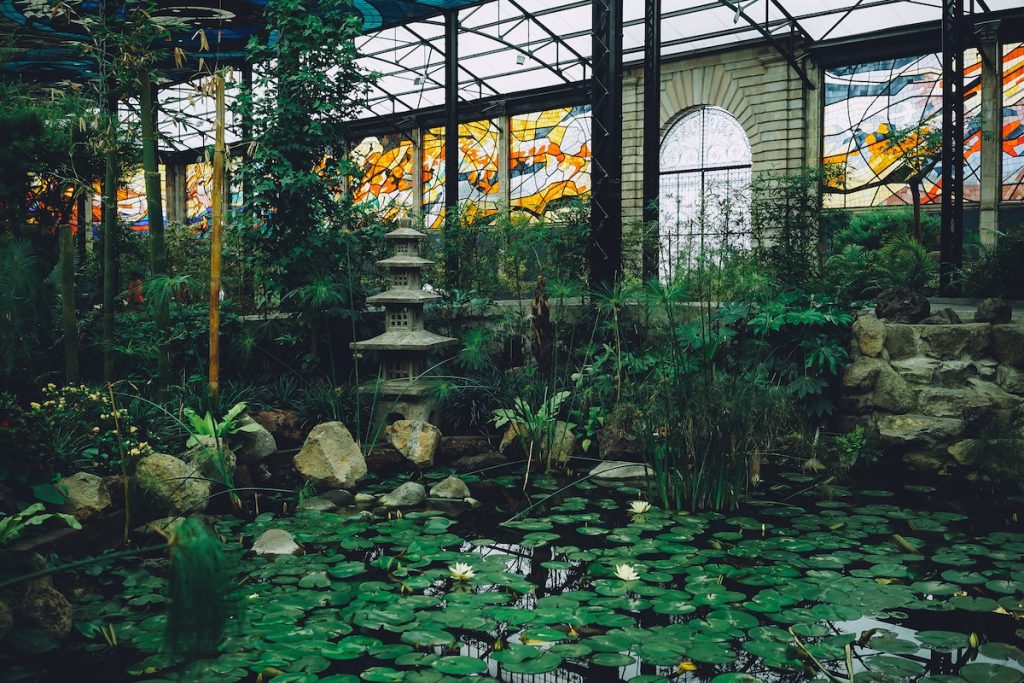A greenhouse is a structure with walls and roofs made mainly of transparent material, such as glass, in which plants are grown. These structures range in size from small sheds to massive commercial operations. Greenhouses provide a controlled environment for plant growth year-round, protecting tender seedlings from harsh weather outside.
This article will discuss the essentials you need to consider when building a greenhouse. It will cover siting, materials, ventilation, heating, and more. By the end of this post, you’ll have a better understanding of what it takes to build a successful greenhouse. So let’s get started!
Start with a plan.

When starting with a plan for your greenhouse, it’s essential to consider two main components: the types of plants you would like to cultivate and how much space is available. If a lot of space is available – potentially more significant kinds of plants or even climbing fruits and vegetables that can hang from arched structures – then go wild with the possibilities.
From lush tropical foliage to delicious vine-ripened tomatoes, there’s an array of options that can suit a variety of greenhouses. Alternatively, if space is limited – especially in the case of urban greenhouses – then smaller plants might be best suited; these could include dwarf varieties such as low-growing fruit trees or small flowers that won’t overgrow the limited space available.
Choose the right location for your greenhouse.
When looking for the right location to build a greenhouse, it’s essential to consider the factors affecting your plants. You should always pick a bright and sunny spot with ample natural light from the sun.
This applies regardless of the season and time of day, as plants require consistent daylight levels to grow and thrive. In addition to ensuring direct sunlight, you also want to avoid strong winds; strong breezes can damage fragile plants and disrupt their growth.
Ensure that your greenhouse is positioned in a sheltered area – like close to a fence or wall – which will create a windbreak and shield your plants from any gusts of wind. You may want to consider using polycarbonate roofing systems to protect your plants from strong winds further.
Decide on the type of greenhouse you want.
There is no shortage of options when deciding on the type of greenhouse you want. Plastic greenhouses are highly durable and easy to assemble, while metal greenhouses are cheaper and more resistant to strong winds. Glass greenhouses look elegant. However, they are more expensive than other types and harder to set up.
Ultimately, your choice will depend on your budget and the intended purpose of your greenhouse. Consider carefully before selecting – whatever option you choose should last for many years!
Ventilation is essential in a greenhouse.
Ventilation is essential to the success of your greenhouse; without it, plants can become stressed and struggle to thrive. The easiest way to ensure adequate ventilation in a greenhouse is to install windows or vents that can be opened when necessary. This allows fresh air to circulate and temperatures to remain stable. Good ventilation reduces humidity levels reducing the risk of fungal diseases developing.
Additionally, ensure that windows or vents are installed on opposite sides of the structure so air can move appropriately around the entire space. You can provide the best environment for your plants with adequate ventilation, meaning they will be healthier and more likely to produce a good harvest.
Heating and cooling systems are also necessary.
Heating and cooling systems are essential components of any greenhouse because they can maintain the temperature within a given range and protect plants from external stressors. An advantage of these systems is that you can customize them to meet the specific temperature requirements that certain plants need to thrive.
Furthermore, installing a heating and cooling system ensures that the greenhouse environment remains consistent regardless of the season or extreme weather conditions, allowing gardeners to cultivate plants year-round.
Greenhouses equipped with heating and cooling systems at optimal levels maximize performance levels for whatever type of plant is being cultivated, making them an increasingly necessary component for those wanting success out of their future gardens.
Don’t forget about lighting.
A vital part of a well-maintained greenhouse is quality lighting! LED lights are an excellent option for greenhouses as they’re environmentally friendly, energy efficient, and give off virtually no heat.
More importantly, LED lights also have a long lifespan which could save you the trouble of having to replace them often – perfect for busy gardeners! Investing in this for your greenhouse is smart and kinder to our environment. And don’t forget, you can even find shades of LEDs perfect for growing plants!
Building a greenhouse doesn’t have to be complicated or expensive. By following these essential tips, you can create a space that is perfect for growing your plants. With a little bit of planning and the right materials, you can have a thriving greenhouse in no time.

